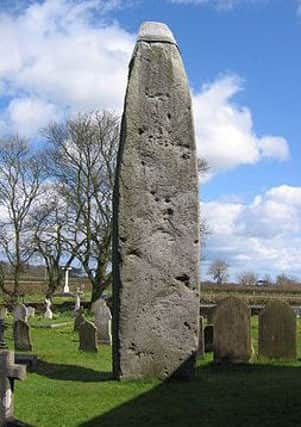No trace of dinosaur feet on ancient megalith


Standing 25ft tall, the Rudston Monolith was probably erected around 1600BC, long before the Norman church of All Saints was built just a few yards away.
Apart from its impressive size, it has long been thought that part of its importance owed to a set of fossilised dinosaur footprints down one side of the rock.
Advertisement
Hide AdAdvertisement
Hide AdBut now an exhaustive study by archaeologists has concluded that the rock bears no trace either of the “footprints” or other prehistoric art.
The survey by English Heritage’s geospatial imaging team (now Historic England) used two different techniques to investigate the monolith’s surface. Both terrestrial laser scanning and “Structure from Motion” photogrammetry were used to produce two 3D models of the stone.
The surface of the stone in each model was analysed to search for traces of the reported dinosaur footprints and “cup and ring” shaped carvings.
Historic England said yesterday after careful examination the team concluded that “there were no traces of either on the monolith’s surface.”
Advertisement
Hide AdAdvertisement
Hide AdThe huge roughly-cut block of gritstone was constructed in what is now the village of Rudston, near Driffield, in the late Neolithic or Bronze Age period. An 18th century excavation by Sir William Strickland is said to have found the stone extended below the ground as much as was visible above. He also found many skulls and suggests they may have been sacrificial. Some historians say the flat-sided grey sandstone megalith, that now bears a cap of lead, was cut and rolled from Cayton Bay, south of Scarborough. Others say it came from Grosmont, near Whitby. It may also have been Ice Age debris deposited in the area. A full report on the archaeologists’ findings will be published within weeks.